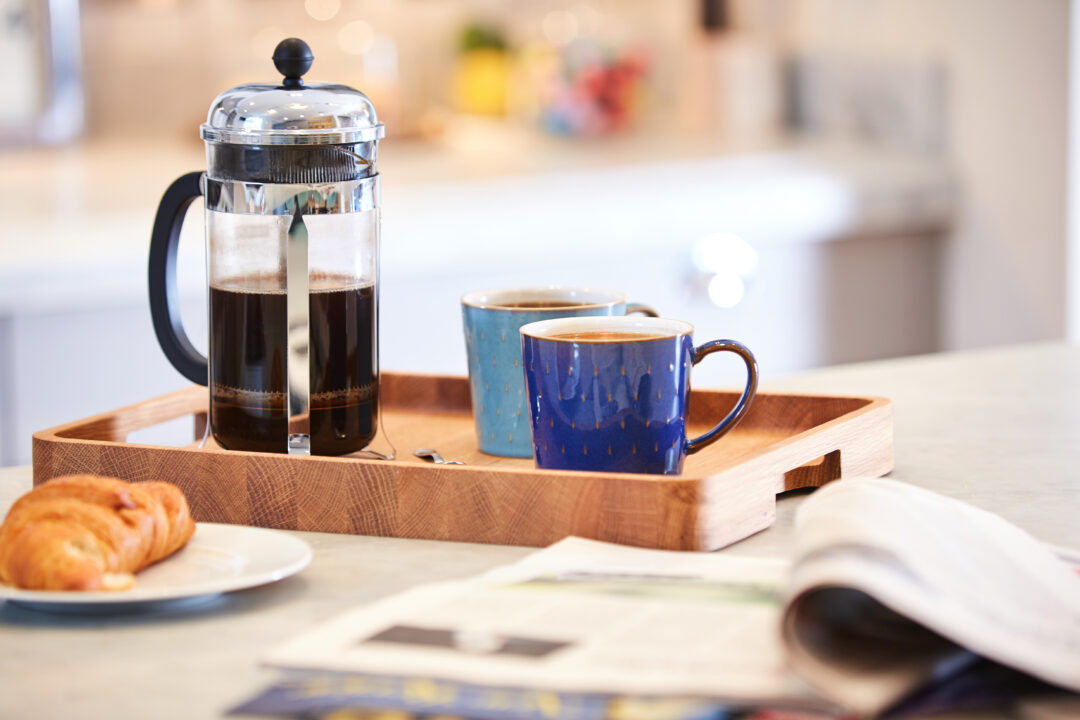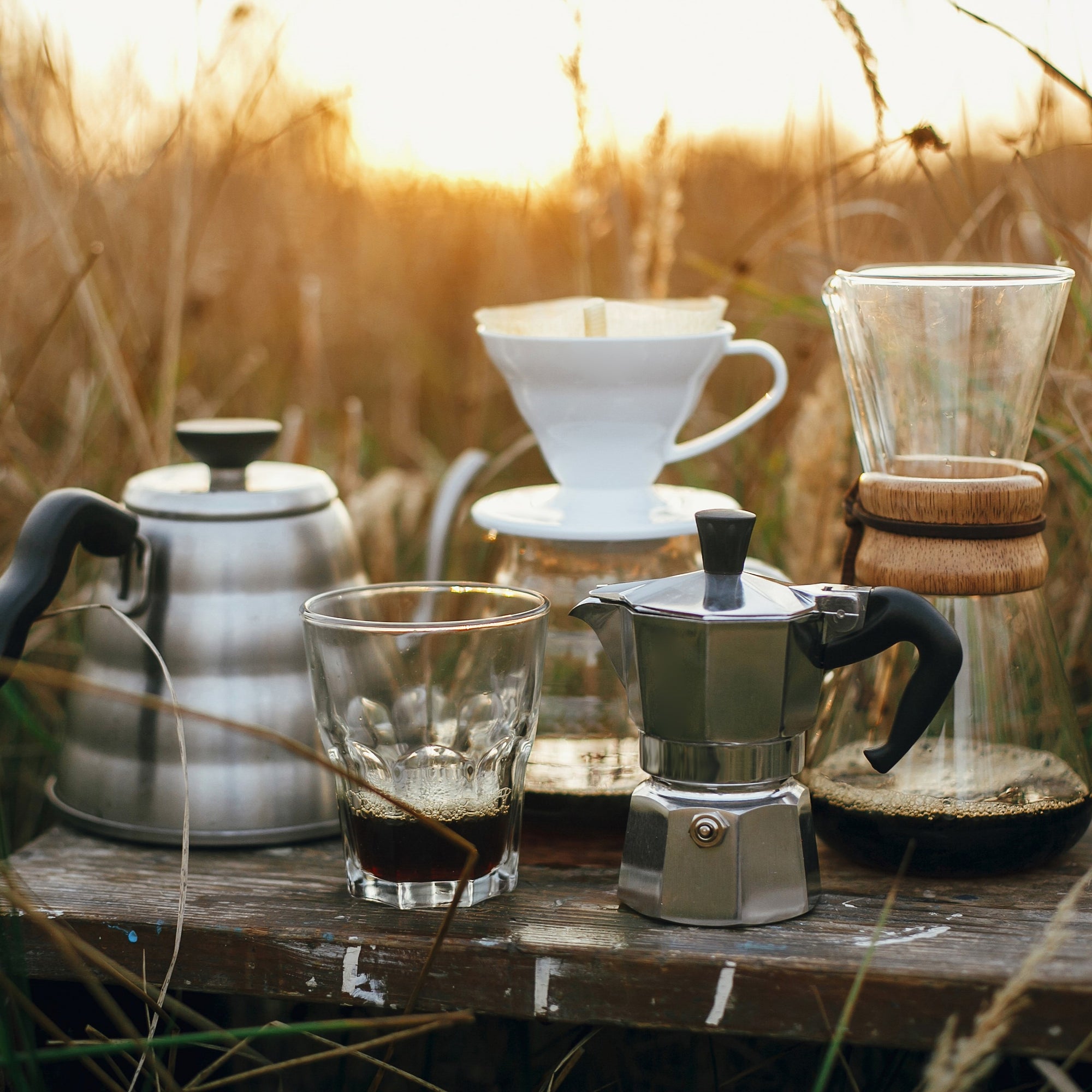Coffee Brewing Methods: Opening the Keys to the Perfect Mug in your home
Coffee Brewing Methods: Opening the Keys to the Perfect Mug in your home
Blog Article
The Science Behind Coffee Brewing: Exactly How Temperature and Time Affect Your Beverage
Recognizing the scientific research behind coffee brewing exposes that temperature level and time are not mere variables but critical elements that dictate the drink's flavor account and overall top quality. As we check out the subtleties of these components, the concern arises: how can one properly balance temperature and time to attain that ideal brew?
The Chemistry of Coffee Extraction
The chemistry of coffee removal explores the elaborate procedures that transform raw coffee beans right into the aromatic beverage taken pleasure in worldwide. This transformation largely involves the solubility of various substances present in the beans, which are influenced by elements such as work size, water high quality, and the brewing technique used.
During the developing procedure, warm water acts as a solvent, drawing out soluble compounds, consisting of high levels of caffeine, sugars, lipids, and acids, from the coffee grounds. Each substance adds to the flavor profile, aroma, and body of the final drink. For example, acids are accountable for bright and tangy notes, while oils add to an abundant mouthfeel.
The first phases of developing extract acids and sugars, leading to a positive level of acidity, while extended removal can lead to resentment due to over-extraction of undesirable substances. Comprehending these chemical communications is vital for enhancing developing techniques, as the equilibrium in between extraction time and water temperature level can substantially affect the overall quality of the coffee.
Ideal Developing Temperatures
Discovering the appropriate brewing temperature is crucial for unlocking the full possibility of coffee flavors and fragrances - coffee brewing methods. Research study suggests that the optimum variety for brewing coffee exists between 195 ° F to 205 ° F(90 ° C to 96 ° C) Within this variety, the removal procedure efficiently dissolves the preferable soluble compounds in coffee beans, resulting in a flavorful and well balanced cup
Brewing at lower temperatures, such as below 195 ° F(90 ° C ), may lead to under-extraction, yielding an acidic and weak brew with muted tastes. On the other hand, developing at temperatures exceeding 205 ° F(96 ° C) can cause over-extraction, producing a bitter and harsh taste because of the excessive dissolution of unfavorable compounds, such as tannins.
Additionally, the optimal developing temperature can differ depending on the coffee bean kind and roast degree. Lighter roasts commonly benefit from somewhat greater temperatures to boost their complex flavor accounts, while darker roasts might be much better suited to lower temperature levels to mitigate resentment.
Eventually, preserving precision in brewing temperatures is important for accomplishing a harmonious equilibrium of tastes, making certain that every mug of coffee supplies a gratifying sensory experience.
Impact of Brewing Time
Developing time plays an essential duty in establishing the flavor account and general quality of coffee. The removal procedure, which affects the taste, aroma, and body of the beverage, is greatly depending on the length of time the coffee premises touch with water. Much shorter brewing times can result in under-extraction, leading to a sour or weak taste, as insufficient soluble compounds are liquified. Alternatively, long term brewing can lead to over-extraction, where unwanted substances are launched, leading to an astringent or bitter preference.
Optimal developing time differs relying on the approach utilized and the work dimension of the coffee. For example, a French press generally needs regarding 4 mins, while coffee removal is normally finished within 25 to 30 seconds. It is crucial to calibrate developing time in conjunction with various other variables, such as water temperature level and coffee-to-water proportion, to accomplish the desired flavor profile.
Recognizing the effect of brewing time allows coffee enthusiasts to fine-tune their developing strategies, inevitably enhancing the sensory experience of their mug (coffee brewing methods). With careful interest to this variable, one can unlock the complete possibility of the coffee, exposing its unique qualities and subtleties
Developing Methods and Their Effects

For example, approaches like French press and cold brew permit for a longer steeping time, causing a fuller body and durable flavor because of enhanced removal of oils and soluble solids. Conversely, espresso developing uses high pressure and a much shorter extraction time, producing a concentrated shot that highlights intense tastes and a rich crema.
Pour-over techniques, such as Chemex or V60, provide a more regulated extraction procedure, allowing the maker to control flow price and water distribution, which can boost brightness and quality. Percolation techniques cycle water with the coffee premises numerous times, leading to a more powerful, usually bitter taste.
Last web link but not least, using paper filters versus steel filters can additionally impact the final taste; paper filters usually produce a cleaner mug by trapping oils and fine fragments, while steel filters enable even more oils to pass through, adding to a fuller mouthfeel - coffee brewing methods. Understanding these subtleties can elevate the coffee experience considerably
Tips for Perfecting Your Brew
A well-executed mixture can change also the easiest coffee right into an amazing experience. To achieve this, attention to information is necessary. Start with premium, newly roasted beans, as their flavor account reduces in time. Grind the beans right before making to maximize freshness, guaranteeing the grind size matches your brewing method-- coarser for French press and finer for espresso.
Water quality plays an important duty; use filteringed system water free from pollutants. The ideal discover this info here developing temperature level varies between 195 ° F and 205 ° F(90 ° C to 96 ° C ) Too hot can swelter the coffee, while as well cool may under-extract flavors.
Timing is equally crucial. For immersion approaches, soaking for 3 to 5 minutes is optimal, whereas drip approaches normally take about five mins. Experiment with mixture times to discover your favored toughness.

Conclusion
In summary, the intricate partnership in between temperature level and time is vital in the coffee brewing procedure. Abiding by ideal brewing temperature levels in between 195 ° F and 205 ° F, together with precise timing tailored per method, makes certain the wanted taste account is accomplished. Comprehending these scientific concepts equips people to refine their developing strategies, inevitably resulting in a much more well balanced and enjoyable coffee experience. Proficiency of these variables is essential for any coffee enthusiast looking for excellence in their drink.
Recognizing the science behind coffee developing reveals that temperature level and time are not simple variables yet pivotal elements that determine the beverage's flavor account Read Full Article and overall high quality. Recognizing these chemical interactions is critical for maximizing developing methods, as the equilibrium in between removal time and water temperature can dramatically affect the general quality of the coffee.Brewing time plays a critical role in determining the flavor profile and total quality of coffee. By concentrating on these elements-- bean top quality, grind size, water temperature level, soaking time, and proportion-- you can boost your coffee brewing procedure, resulting in a constantly superior cup.
In recap, the complex partnership between temperature level and time is vital in the coffee developing process.
Report this page